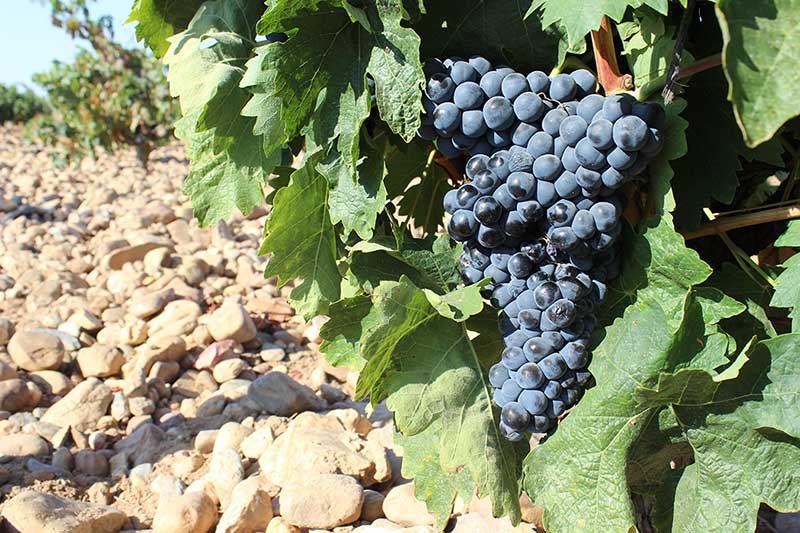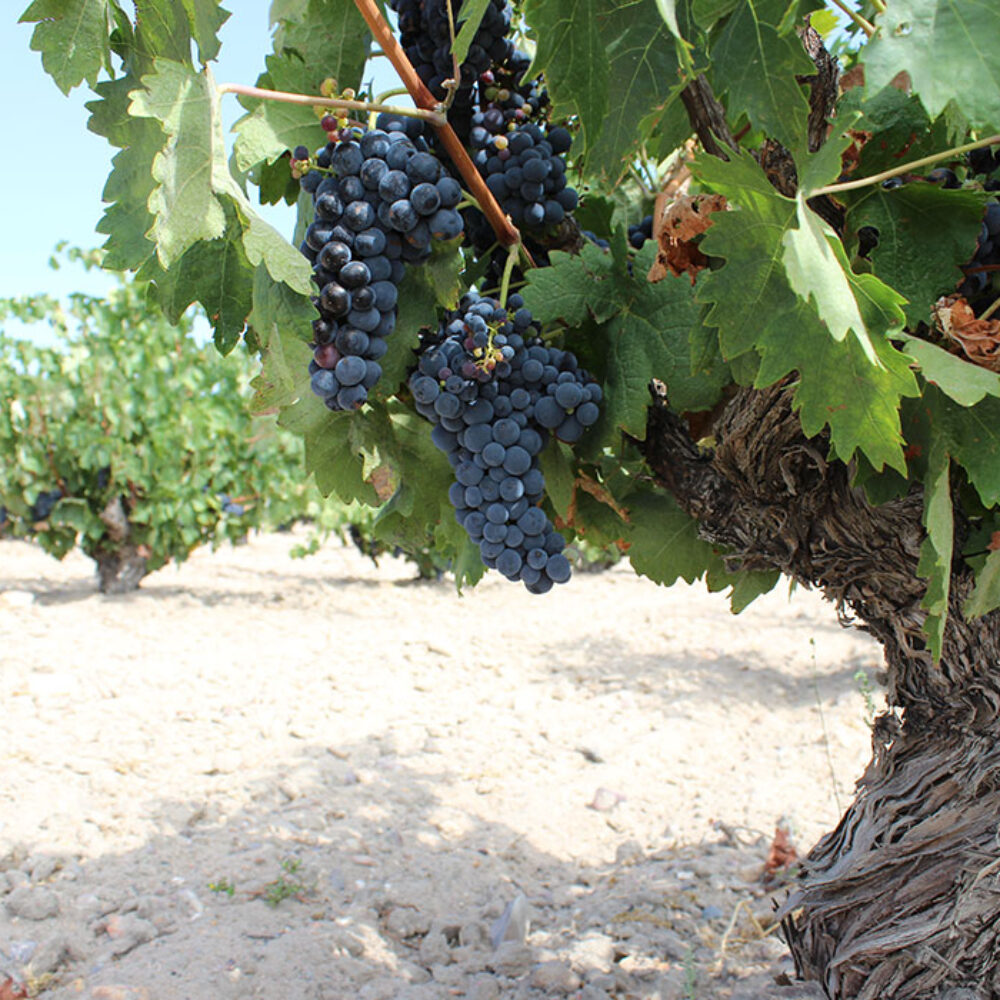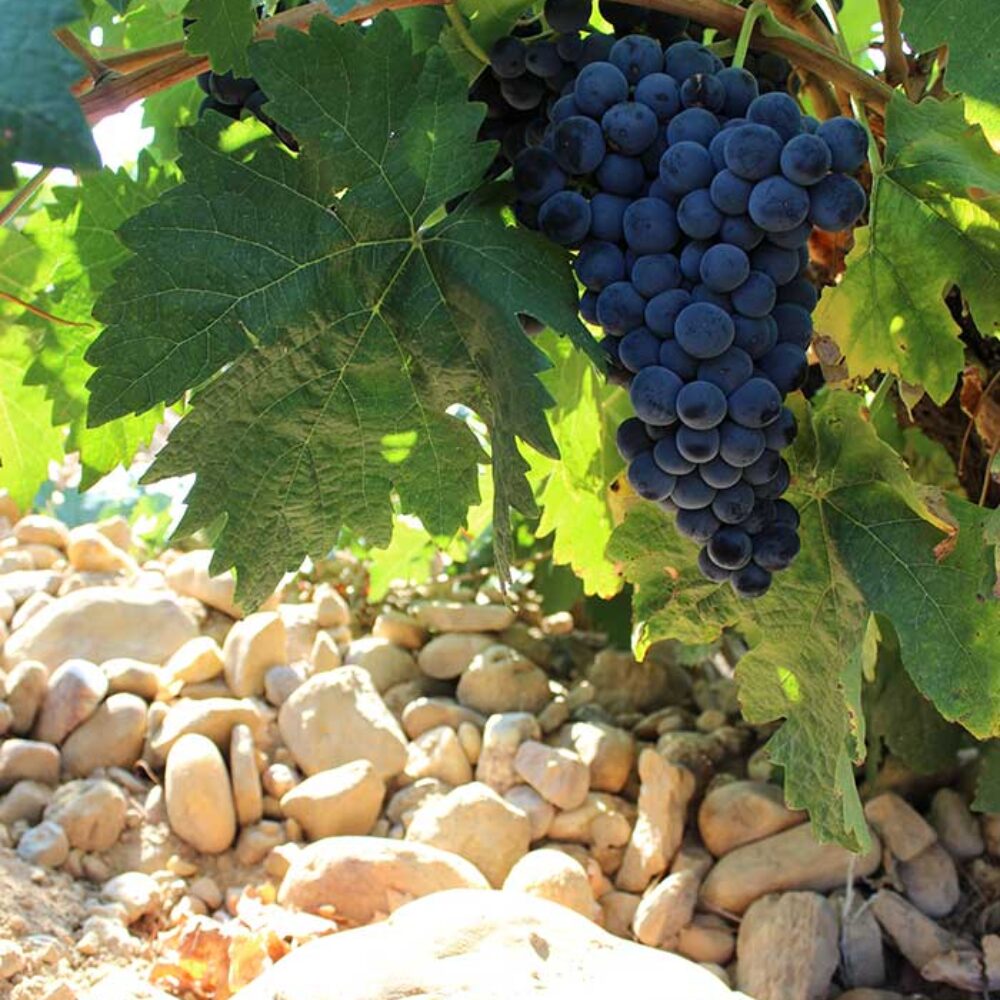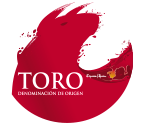It is believed that the Romans (210 BC) were the true promotors of winegrowing in the Douro Basin after invading the previously Vaccean territory and completely destroying the city under the orders of the Carthaginian general Hannibal.
On 11 January 1505, the famous 83 laws were proclaimed in Toro, which was the seat of the Court; centuries later, the city would be consolidated as the capital of the province. Over the years, a number of documents have organised, regulated and recognised wine cultivation and its importance to the city’s economy. Toro wine travelled to the New World and christened its discovery due to the characteristics that made it last and hold up well over long journeys.


TINTA DE TORO
Native and unique,
with a name of its own.


After the phylloxera infestation in Spain in 1870, grape cultivation underwent a great transformation. In Toro, the Tinta de Toro variety took root in loose, well-draining, sandy soils, with the widespread cultivation of ungrafted vines being conserved to this day. Toro had its own Oenological Station located in the city that provided technical services to meet the demands of winegrowers at the time. On 26 May 1933, Toro was officially classified as a Designation of Origin for the first time. (Gazette published 4 June 1933)
In 1990, the Castilla y León Regional Government launched a cloning and health selection plan for the grapevines, rescuing and multiplying the native varieties of the area, including Tinta de Toro, which is today a certified native variety with a name of its own and well-defined agronomic and ampelographic characteristics. It is sold with a blue label and its corresponding clone number.
CHARACTERISTICS
Colour
Red grape
Main use
Winemaking
Extension
D.O. Toro Native Variety
Vine growth
Semi-upright
Vine shoots
Hairless, with a continuous contour and interspersed maroon and green layers of colour.
Tendrils
Distribution in discontinuous pairs, of medium length, bifurcated or trifurcated.
Leaves
Medium-sized, pentagonal with five lobes and five well-defined sinuses, deep green in colour with a matte sheen. When the grape-ripening cycle ends, interspersed purple leaves appear.
Underside of the leaf
Well-defined, whitish and hairy main veins, poorly defined venules, also hairy. Overall, the underside is bristly, with medium hair density and a flexuous appearance, becoming woolly when rubbed.
Leaf teeth
Rectilinear, long and not very numerous.
Petiolar sinus
With overlapping edges.
Upper and lower lateral sinuses
Well-defined and often with overlapping edges. Between the lateral and lower sinuses and the petiolar sinus, a mark appears that forms the outline of two or more sinuses.
Leafstalk
Layered colour between green and rose with fine hairs.
Leaf blade
Wavy
Clusters
Long and cylindrical with shoulders.
Grapes
Spherical with a flattened, medium-sized umbilicus, blackish-blue in colour, with colourless flesh and thin skins. When ripe, coloured veins appear in the flesh.
Seeds
Normally we find two or three medium to large-sized seeds.


